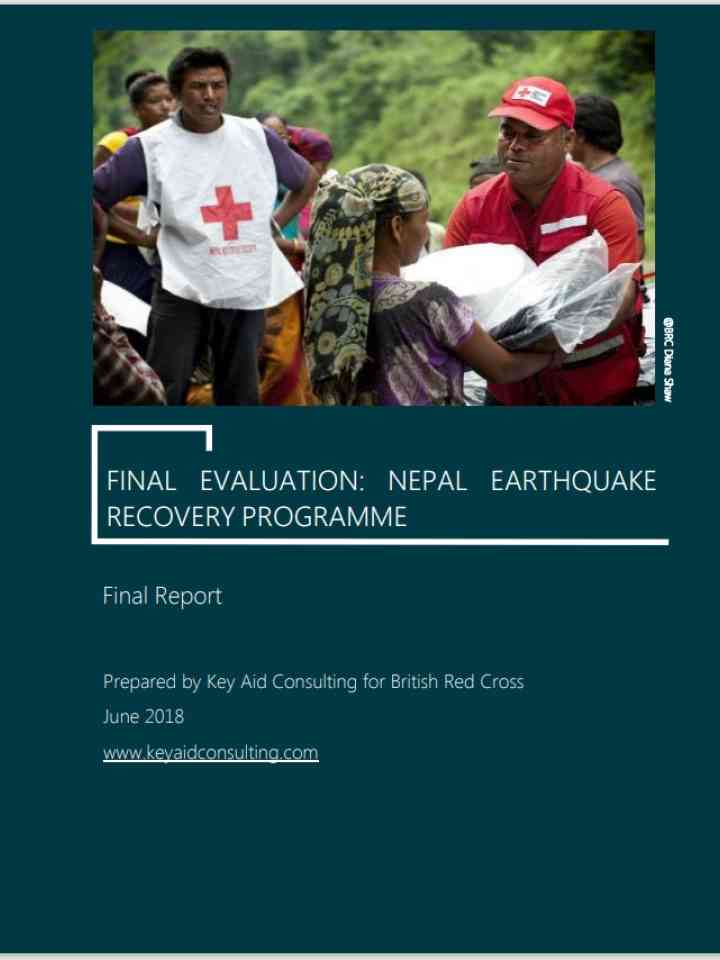On 25 April and 12 May 2015, earthquakes of the magnitudes 7.8 and 7.1 respectively struck Nepal, causing destruction in more than 50 districts. In the aftermath of the earthquake, the International Federation of the Red Cross (IFRC) launched a large-scale, multi-sectoral relief intervention in the 14 most severely affected districts.
Starting in November 2015, the British Red Cross (BRC) partnered with the Nepal Red Cross Society (NRCS) to implement a bilateral response that concentrated on recovery. This recovery programme followed the NRCS’ 4+1 Implementation Strategy (i.e. Shelter, Health, WASH and Livelihoods, as well as Community Engagement and Accountability). The BRC/NRCS response was implemented in the three districts of Kathmandu, Laliptur and Bhaktapur, across 75 urban, peri-urban and rural communities. It occurred in two phases: Phase 2a lasted from November 2015 – April 2017, and Phase 2b from May 2017 – April 2018.
The purpose of this evaluation is to take stock of the BRC/NRCS recovery programme to provide feedback on its effects and outcomes, as well as on the value for money (VfM) of its operational model (i.e. the BRC/NRCS partnership).
Explore further
